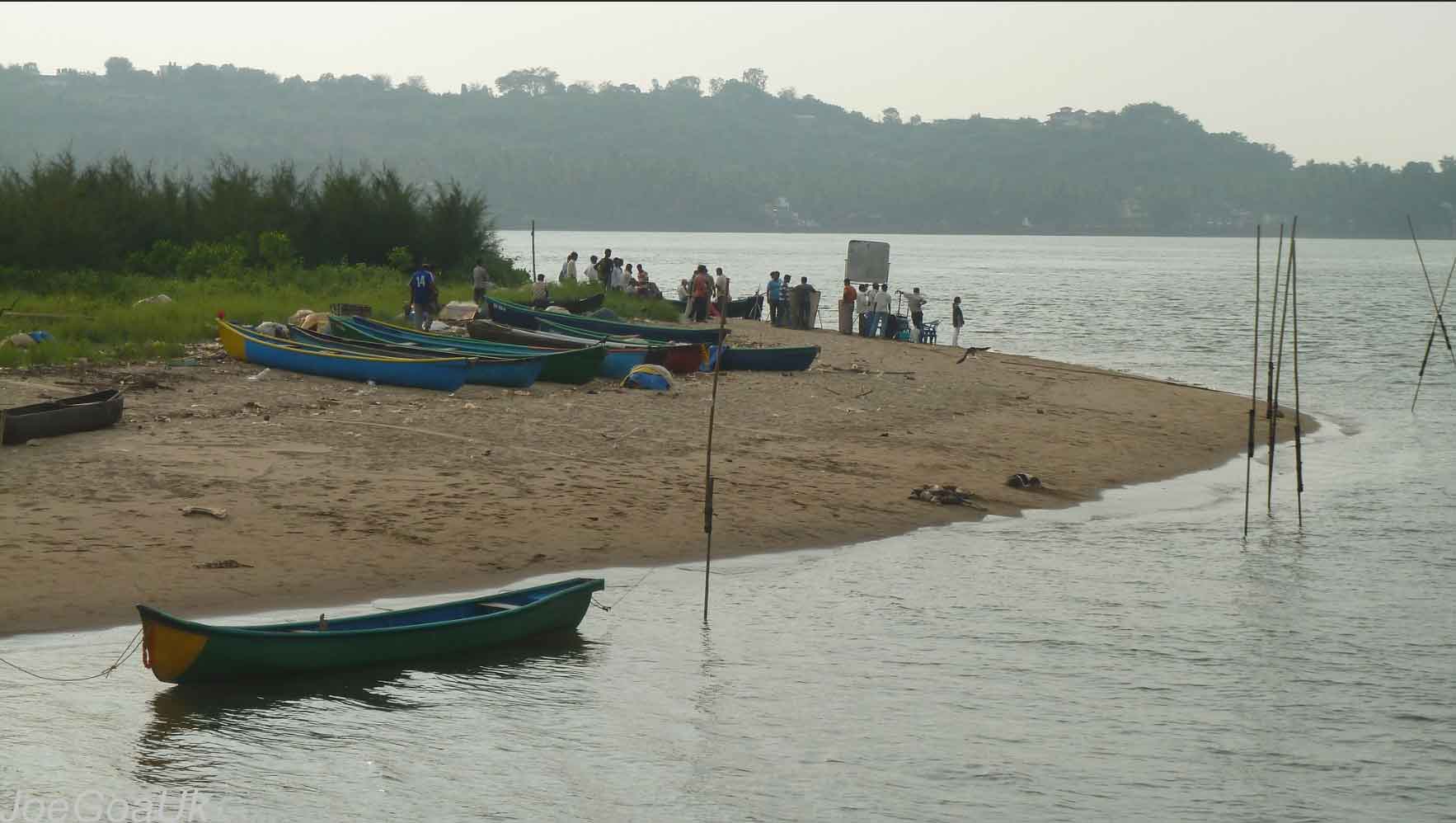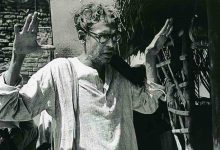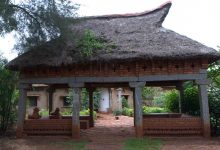Since 2004, cinema audiences from other parts of the country have started converging to the State of Goa at least once a year to witness international cinema. In the process some effort has been made to rediscover if Goa ever had a tradition of films.
Before cinema came to make any inroads in this small patch of territory ruled as a colony by the Portuguese government, the people of Goa had already crossed the ‘international border’ and found jobs in Bombay, now Mumbai, in its film studios.
In the Silent Era of Indian cinema there was one actress Ermileen Cardoz who had taken station in Bombay and Calcutta and acted in over a dozen silent films of indifferent credit. It was her good looks that gave her a head start in films. She stayed in the industry till she acquired middle age looks and then retired into the sunset. She was not alone.
Goa sent out to Mumbai, Bangalore and Chennai a large number of technicians, helping hands, and even a set of well-respected musicians and music composers, to contribute to film making. Goa’s iconic export in talent is undoubtedly the Mangeshkar family, dominated by Lata and Asha.
Goan musicians took hold of the music trade in Bombay from the time of World War One when there was an influx of foreigners. But when sound came to cinema, the talented Goan instrumentalists moved in to join the Marathi and Hindi cinema studios and be part of their production line. The famous trumpeter Chic Chocolate was not only known as a versatile musician competing in fame with the better known American jazz musicians but also played bit parts, especially in the well known film ‘Howrah Bridge’ (1954).
Being a colony of the Portuguese rule, Goa did not see the entry of cinema exhibition until sound came to the subcontinent. The mother country, Portugal, was still just above the poverty level, and colonial enterprise was still limited to mining for minerals and cultivation of traditional cash crops like cashew nuts and mangoes.
The first theatre to screen films was developed out of a shed in Panaji itself where today the building of the Panaji Municipal Corporation is located. Called ‘Eden Cinema’ it was an experimental effort created out of a barrack structure and attracted only foreigners into its ravenous cavity. The effort however succeeded in showing that there was a limited audience keen to patronize cinema. Thus, a more formal cinema hall was constructed near to the Eden Cinema, called ‘Cine Teatro Nacional’. The construction was done by a business house called ‘Casa Rau’ owned by the Deshpande Brothers.
Old records inform that this cinema hall, beautifully decorated in Deco style, was opened on November 25, 1935, by the Governor of Goa. The first film to be screened was a Hollywood musical production “The Kid From Spain”. This was followed by “Sky Devils”. The ticket charge was equal to today’s 50 paise and seats were numbered with rows named as A, B, C, D, etc. Unlike in the rest of the Indian territory, where there was segregation of women members in the audience as ‘mardana’ and ‘zanana’, no such division was made in the seating order here.
The next development in Konkani cinema history came in 1949 when a local group of artists from the Konkani theatre (tiatr) decided to experiment with making a celluloid film. Their effort, called Mogacho Aunndo or ‘Loves Craving’ was premiered in a local Mapusa cinema hall on April 24, 1950. The film for sheer curiosity attracted a sizeable local clientele and saw a moderate commercial success. It was smuggled out of Portuguese Goa to Bombay to be shown to its wider clientele. Once in Bombay, it saw a successful morning show run in the local Rivoli (Matunga), Liberty (Fort area) and Star (Mazgaon) theatres. This effort however did not lead to the birth of a new Konkani cinema.
Goa soon came under a political cloud as a movement for its independence began, led by Ram Manohar Lohia the Socialist leader. The colonial administration fearing a rise in micro nationalism in the arts, clamped a ban on any attempt to make new Konkani films, and language theatre also came to be discouraged and scripts censored minutely to find out any nationalistic signs.
There was no film production in the Konkani language until Goa became a part of India in 1961. Egged on now by the influence of Marathi cinema across the interstate border, the second Konkani film was launched in 1962 itself and released in 1963. It was called ‘Amcham Noxib’ or ‘Our Luck’. The commercial success of this small film really launched Konkani Cinema in a modest manner. It led to some of the artists of Konkani theatre sharing time and glory both in drama and film acting interests. The people of the Konkan speaking area now looked forward to their own ‘stars’.
The period of the 1960s saw the town of Panaji develop itself, following its integration with the Indian mainland, and commerce suddenly increased manifold. With trade, came a new population, to settle down. Business boomed and there was now a new need for additional entertainment. Marathi cinema could also find its new outlet here.
Panaji now saw its next new cinema hall, called ‘El Dorado’, constructed where today stands the Municipal Market. The movie hall was later demolished to make way for a new commercial complex. But soon the Cashew King of Goa, Mr. E Zantyes, took a liking to the film business and moved in. He opened new cinema halls in Panaji, Mapusa, Margoa and elsewhere. His two cinema halls in Panaji were ‘Ashok’ and ‘Samrat’ Status quo remained thereafter until news came that IFFI would get shifted from New Delhi to Panaji.
There was one big swift activity in the open ground behind the Old Medical College, and a film complex called Inox Complex was developed and opened in 2004. This Complex, consisting of four screens, and with seating capacities suited more to the daily needs of the local audiences, proved miserably inadequate for an international event.
Locating IFFI in Goa had one uncharted effect. It created an interest in the search for the roots of Konkani Cinema. Stray efforts were now made by film enthusiasts to find out the past of Konkani Cinema, its related roots, and the people who crowded it or represented the area in other language cinemas in the country.
In 2009, a local film enthusiast, Rajendra Talak compiled the first ever compendium on Konkani Cinema and titled it ‘Konkani Chalchitram’.
Goa, despite 12 years of IFFI until 2015, still has not developed a dedicated cinema audience. Film crews from Mumbai were still descending in the countryside to undertake film shooting but this did not enthuse the local youth to take to film making. The Konkan language had a limited spread and business wise the experiment to make films was still risky.
The story of the discovery of the oldest evidence of Konkani cinema needs to be now told. For quite some time, ‘Amchem Noxib’ with its complete film print was considered as the oldest Konkani film, though recall of the earlier film released in 1950 remained in public memory. Then it all happened suddenly.
It was on March 30, 2015 that one Bardroy Baretto appeared before a film archivist (Shivendra Singh Dungerpur) with a reel of film claiming it was the end part of the first Konkani film. The film was found to be ‘Mogacho Aunndo’, directed by Al Jerry Braganza. This particular film reel had remained in possession of a Pune banker-journalist, Isadore Dantas.
The discovery was very important. Firstly even as a fragment of the original, it was a proof that despite the microscopic population of the spoken language, a feature film had been made to assert the anthropological identity of the area. Some quick research into old fragments of newspapers revealed that this particular film was released commercially in Mapusa on April 24, 1950, and taken out of the Portuguese colony to Mumbai for screening. As popular interest ran high on this discovery, a complete publicity sheet poster was discovered, one that was good enough to make duplicate copies of.
The second Konkani film,‘Amchem Noxib’, led to the recognition of Konkani film’s first regular film director, a local musician Frank Fernand, who had gone on to make another successful film in 1966, namely, ‘Nirmon’.
The story on how the single reel of the first Konkani film came to be preserved is in itself also a lesson for all of us and for the State of Goa to ponder.
It seems that when Bardroy Baretto appeared before this film archivist with the single reel, the reel was afflicted with all the damage that was possible. It was brittle, and it was sticky and ‘wet’ in parts as chemicals were reacting to atmospheric air to melt the cellulose.
Immediately the film reel was dispatched to the world’s best film restoration laboratory, L’Immagine Ritrovata, in Bologna, Italy. The laboratory accepted the material with no guarantee of success. The material was first put through a process of drying out the affected areas that had become wet, after which an attempt was made to rehydrate it to remove its brittle state.
When the film material was soft enough to handle, a very slow process of un-spooling began using various solvents. It took months to unravel the 500 odd feet of material. Finally with digital technology the imagery was restored but the sound track is still under construction and may take another one year before a fully restored version of the original one reel of the first Konkani film is realised. This restored reel has a running time of three minutes.
In the mean time a new search has begun to trace out the other parts of the film, which may still be lying around in some store premises in Mumbai.
It is here that an intervention by the State as a patron of arts is expected. Currently there is no facility in Goa to protect or preserve the works of film directors who are now making films in the Konkani language. There is also no official plan to start such a project.
A small facility should now be considered for locating a centre for the preservation and restoration of all material that speaks of Konkani culture, cinema included. This centre could also preserve features films in Coorgi and Tulu languages and of other minority languages of the area.
We have two licensed centres for assistance, namely, the National Film Archives of India, in Pune, and the National Museum Restoration Laboratory, in New Delhi. There is also a private company in Mumbai that has started work on film restoration and does quality work in this direction. Their help should be taken.
Statisticians suggest that between 1950 and 2014, Konkani Cinema has recorded the production of 45 films. Not all of them are produced in celluloid format. Some films made after 2004 have been made in the digital system, which allowed filmmakers to cut down the cost of film projects drastically, and led to an increase in film production. Still there is yet no reliable data on the total number of films made in the Konkani language and the field is open for future film scholars to discover new information on this cinema.
Some new developments happening in this area need to be mentioned now. One significant change is the expansion of the commercial territory for Konkani films. The other important change was the emergence of Konkani films in the list of awards in the National Film Awards.
The traditional area of this language had remained for centuries in parts of north Karnataka, all areas of Goa, and the neighboring districts of Maharashtra. Migrant populations speaking this language were to be found in some parts of Pune and areas in Mumbai.
The territorial expansion of this language began to be noticed as sea faring Goans began to cross the Arabian Sea to find jobs in the Middle East. First they remained on ships. But soon enough they took to the shores to work as cooks, drivers and aayahs in the homes of the rich locals and Europeans expatriates. The more enterprising Goans entered into business enterprises and acquired wealth. They would still return to their home grounds during Christmas to be with their relatives and brush their language skills. Their more permanent presence came to be now noticed in nations like Dubai, Oman, Abu Dhabi, and Kuwait. The number of Konkani speaking population serving in the Middle East and on ships worldwide was now equal to the population remaining on the subcontinent.
This was also a Konkani cinema audience! And no one had seen it from that point of view.
In 2012, some one sitting in Kuwait did exactly that!!
In 2012, Sheron Mozerello made a film ‘Tum Kitno Kortolo Asho’ and launched it from Kuwait. The film director also became the first ever woman film director of Konkani Cinema. She explained her decision to begin the screening of her film from Kuwait as commercially sound so that she could garner her costs from her Middle East Konkani audiences first, and then come to India to her roots and show her work with no fear of suffering a loss.
This woman’s thinking proved correct. Konkani Cinema had now found a new commercial territory in two new sectors, namely Middle East and the world shipping routes.
Beginning from 1961, the Konkani language was included in the category of ‘Other Minor Languages’ in all consideration of support to the language. The National Film Awards also treated this language likewise. Today the annual production of Konkani films is a modest under a dozen, and from this lot at least one film manages to garner a National award for the best regional language film, and thus acquire some immortality.
[divider size=”1″ margin=”0″]
6 films will be screened in “The Goan Story – A Konkani Film Package” section at IFFI 2019: A rainy day, Amori, Digant, Juze, K Sera Sera, & Paltadacho Munnis.
Photo courtesy: joegoauk44, Konkani Film Shooting of DIGANT | https://www.flickr.com/photos/joegoauk44/6217608943






Leave a Reply
You must be logged in to post a comment.